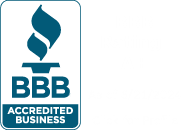Today, let’s look at how to use social media. For nonprofits, social media often feels like an obligation, but there usually isn’t the follow-through and commitment to build success. A successful nonprofit social media strategy requires thoughtfulness, planning, consistency, time, and energy.
Let’s take a look at some tips and tricks!
Social Media Is a Place to Build Brand Awareness & Audience Engagement
The secret to crafting a successful nonprofit social media strategy is to recognize that social media isn’t really a place for soliciting money. It’s not a giant fundraising spigot. You can make those posts sometimes, but that’s not what social media is for. It’s a place for building brand awareness and audience engagement.
Use your social media posts to teach your followers about what your organization is, what you do, and how you pursue your mission. Give insights and progress reports into the work you’re doing, the campaigns you’re running, and the impact of your efforts.
Here’s a little-known tip for a good nonprofit social media strategy: The content you post doesn’t usually have to be on-topic to your organization’s mission. You can also share community stories, pretty pictures or videos, funny content, staff bios, and more. That’s how to use social media for nonprofit growth and expansion: Create and reshare content that is interesting to your audience. Use your knowledge about the demographics that you’re targeting in order to make informed guesses about their interests. Make your social media accounts interesting enough that people want to follow them, reshare your posts, and leave comments.
Engagement does not come easily, nor quickly. Always be experimenting with your nonprofit social media strategy, and paying close attention to the results. Over time you will get better at engaging your audience.
Pleasing the Algorithm Increases Your Content’s Visibility
When you post on social media, you’re trying to persuade two different audiences at once: You’re not just reaching out to your own community. You’re also trying to convince the social media network’s algorithm that your post is worth showing to people in the first place:
- A successful nonprofit social media strategy is all about pleasing the algorithm.
This is one of the most important things to take into consideration when you’re thinking about how to use social media for nonprofits. Most folks have busy social media feeds, where your post is just one of many competing for their limited time and attention. If the algorithm decides that your post is something interesting that these people will want to see, then it will put your post close to the top of their feed, and you’ll get a lot more engagement. But if the algorithm decides that your post isn’t interesting, your updates will get buried where far fewer people are going to see them.
A successful social media strategy for your nonprofit organization is a lot like a successful SEO strategy for getting better search engine result rankings: You have to give the algorithm what it wants to see. So…how do you please the algorithm?
Timing, Frequency, and Consistency Are Essential
Timing, frequency, and consistency are crucial to developing a winning nonprofit social media strategy.
One of the most important things you can do to make a social media algorithm happy is to have the right kind of posting schedule. For the best chance of success, you should post:
- The right number of updates per day: This varies from one social network to the next, so your nonprofit social media strategy will need to be granular enough to accommodate multiple posting schedules. Some social networks, like Instagram, are very hungry, with an algorithm that likes accounts who update several times per day. Thankfully, most social media sites are more forgiving. On a traditional site like Facebook, it is optimal to post just two or three times per day.
- At the right times of day: The times of day that you post make a big difference to the algorithm. While it varies depending on your target audience’s particular demographics, a general rule of thumb is that more people are using social media during regular business hours, especially during breaks, lunchtime, and at the start and close of business hours. For most nonprofit social media strategies, noon is the best time to post. 3 pm is also good. After that, 6 pm and 9 am are good choices too. Try to stick with the same times each day. And if you’re updating more than once a day, stagger your posts at least three hours apart, to capture different audiences and prevent the algorithm from thinking that you’re spamming.
- On a regularly occurring basis: You should post every day of the week if you can. If you can’t, then Tuesday and Wednesday are usually the best days, followed by Thursday, then Monday and Friday, and finally the weekend. Whatever days you pick, make sure you stick to them each week.
By posting consistently at the times when the greatest numbers of users are engaged on the social network, the algorithm will interpret your content as more interesting, and it will begin to show your updates to more people more often.
Now, is it really worth it to go to all this trouble with your nonprofit social media strategy? That depends on how much emphasis you want to place on your social media outreach. When it comes to the question of how to use social media, for nonprofits the answer is always “As much as you need.” If you want to build a strong following on social media, then you do need to make a decent investment of time and energy.
- Do not waste time on a social media presence just to have a social media presence. Only invest time in social media if you want to grow a following there. Don’t be half-hearted!
Visuals Are Essential
Always, always, always include visual content on your social media posts. This is critical for any nonprofit social media strategy. The algorithm hates text-only updates.
The visuals can be anything: a photo, a drawing, a video, or even just a spread of large emoji. Generally speaking, the more eye-grabbing the visuals, the better.
Be sure you embed this content directly into your posts: Don’t force users to go to another site to view the content.
The Dangerous Side of Social Media
Social media can be a scary place. There are very few consequences for spreading negativity. You can end up attracting the attention of some disturbing people. When you’re building your nonprofit’s social media strategy you should make contingency plans for dealing with some of these risks.
Dealing with Bad Reviews
If someone has a bad experience with your organization—whether or not you did anything wrong—they might go on social media to complain about you. This could be a donor, an associate, a disgruntled former employee, or simply a member of the public. And if they post on your page, or on related pages that you don’t control, their negative message can hurt other people’s trust in you, or scare other people off from supporting you entirely. This can derail your entire nonprofit social media strategy.
Here are four good rules of thumb for dealing with this kind of problem:
- Never get pulled into an argument. Avoid going into the mud.
- Never counterattack with your own negativity. Stay positive.
- When you can’t reply to something positively, pivot to a related topic where you do have something that you can be positive about.
- Offer to resolve sincere complaints by inviting the complainant to message you privately.
Bad Actors
Do you have rival organizations that compete for your donors’ dollars? You can’t rule out that some of them might create fake social media accounts to badmouth you, creating an inaccurate impression of your organization’s dedication, friendliness, efficiency, and integrity.
To deal with this kind of problem in your nonprofit social media strategy, here are two things you can do:
- If you think you’re dealing with a bad actor (i.e., a fake account), report them and block them. If the exchange is happening on a social media account other than yours, notify the admin of that account and politely ask them to look into it.
- If you are worried about the fallout from a bad actor’s inaccurate representation of your organization, make a public statement addressing the issue and reassuring people in positive tones what you do and what you stand for. You can also debunk specific points if needed, but don’t go too far into the weeds.
Controlling the message and maintaining a good image is an important part of how to use social media for your nonprofit’s brand awareness and reputation.
Get Help Growing Your Nonprofit with BryteBridge Nonprofit Solutions
At BryteBridge Nonprofit Solutions, we don’t offer social media campaign management services, though we’ll be glad to help get you started launching your social media accounts. For the most part, however, an authentic and appealing nonprofit social media strategy has to be something you grow organically, yourself, based on your personality (or the personality of the people who run the social media accounts). Let your individuality come out! That’s how to use social media for nonprofit success!
What we can help you with at BryteBridge Nonprofit Solutions is nearly everything else that a nonprofit organization needs in order to get started, grow, and sustain itself for the long haul:
Just Starting Up?
- Get your organization off the ground
- File for a 501(c)(3) tax exemption
- Design your visual materials and logo
- Develop an optimized, accessible website
- Create a strong strategic plan
Need Help Growing?
- Learn how to do effective fundraising
- Apply for grants successfully
- Unlock the potential of corporate sponsorships
- Build capacity to scale up your operations sustainably
Want Assistance with Administration?
BryteBridge Nonprofit Solutions is here for you, supporting nonprofit organizations like yours that are doing such important work.
Contact our friendly consultants today to learn what we can do to help your nonprofit succeed.



